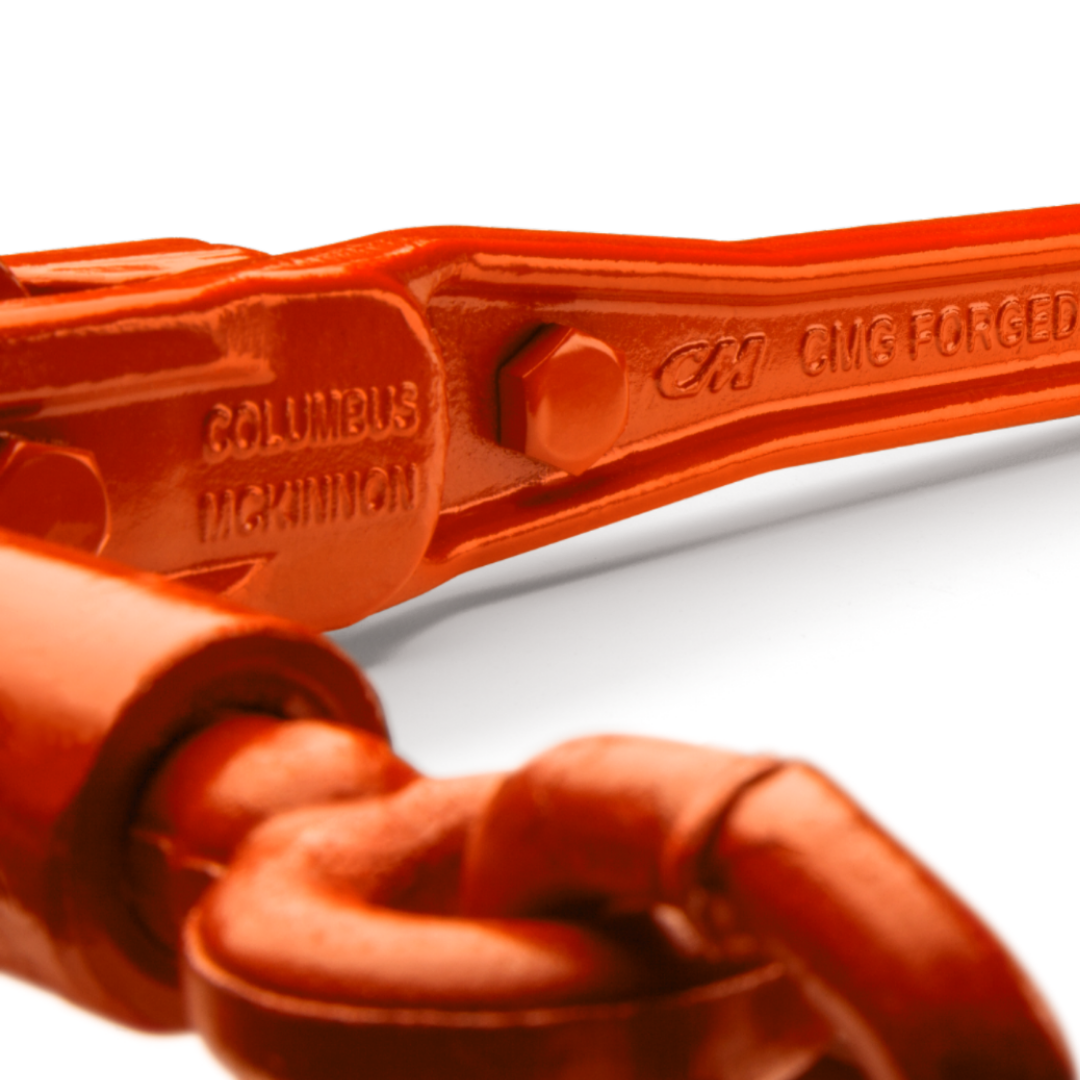Ratchet Binders vs. Lever Binders
Which Type of Chain Binder You Should Use for Load Securement
Transportation and Rail |
Rigging |
By Troy Raines |
Oct 01, 2019
People frequently ask, “Which type of chain binder should I use?”
Being an engineer gives my outlook on life an odd slant. I frequently think of things in terms of simple machines and how they can make my life better. Where am I going with this and how do simple machines relate to chain binder selection? Let me explain.
What is a chain binder?
Also known as a load binder, chain binders are tools used to tighten chain when securing a load for transport. There are two basic styles of chain binders – lever binders and ratchet binders. The method of tightening the binder is what differentiates the two.
Lever Binders

A lever binder is made up of a simple machine, a lever, with a tension hook on each end. The lever is used to increase the force applied to a tie-down. The lever is hinged and takes up the slack by pulling on one end of the tension hook and will lock itself after a 180-degree rotation of the lever around the hinge. Some of the advantages of choosing a lever-type binder include:
- Easy installation
- Fewer moving parts (less maintenance)
- Quick means to secure and release.
Ratchet Binders
A ratchet binder uses two types of simple machines and has two tension hooks on each end and handle. The handle again serves as a lever plus there is the screw thread. Having both simple machines can multiply the force manually applied to the tie down assembly.
 When using a ratchet binder, the lever and screw work together and increase the force manually applied to the tie-down assembly. The result is that it takes much less pulling force on the handle to apply tension than you would need with a lever binder.
When using a ratchet binder, the lever and screw work together and increase the force manually applied to the tie-down assembly. The result is that it takes much less pulling force on the handle to apply tension than you would need with a lever binder.
Ratchets also allow for slower, steadier loading and unloading of forces. This reduces any undue stress or strain on your body. Since ratchet binders are designed with a gear, handle, pawl and end fittings, they will not store up as much energy in the handle as a lever binder will.
Another advantage of ratchet binders is that take-up is safer. The take-up distance of a ratchet binder is typically eight to ten inches – twice that of a lever binder. While take up with a ratchet binder may take a few extra minutes, it is more controlled and ultimately a safer process.
In Conclusion
Both lever binders and ratchet binders work in a similar fashion and should be chosen based on the preference of the operator. As with any type of load securement gear, safe practices need to be followed, including:
- Always wear gloves to maintain a good grip on the binder handle.
- Never use cheater bars on the handle in an attempt to increase the tie down tension. Cheater bars can put excessive force on the tie down. This force can be enough to damage or even break the tie down. This energy may be further increased by shifting loads. The stored energy resulting from this force could injure you or someone nearby.
- Ensure that the lever binder is fully locked and make sure the load doesn’t shift after it is applied.
- When releasing lever binders, stay clear of the handle to avoid any potential kickback.
- Specifically, on ratchet binders, don’t rush the ratcheting process. Slow and steady is the best way to tension.
Related Products
WLL: 2,600 to 16,000 lbs.
North America - EN





 When using a ratchet binder, the lever and screw work together and increase the force manually applied to the tie-down assembly. The result is that it takes much less pulling force on the handle to apply tension than you would need with a lever binder.
When using a ratchet binder, the lever and screw work together and increase the force manually applied to the tie-down assembly. The result is that it takes much less pulling force on the handle to apply tension than you would need with a lever binder.


